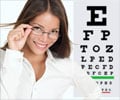Discover the latest advancements in Homonymous Hemianopia treatment with Ocutech's SideSight, to enhance mobility and safety for individuals with vision loss.

Lateral Awareness Alert System for Hemianopsia, Spatial Neglect, and Tunnel Vision
Go to source).
‘Did You Know?
Homonymous hemianopia causes vision loss on one side in both eyes, depending on which side of the brain is damaged. #homonymous_hemianopia #visionloss #eyes #medindia’





Ocutech, Inc. has announced the limited first release of a novel ultrasonic sensor device in partnership with experts in electrical, software, and mechanical engineering. With SideSight, people with hemianopia will be able to walk safely without worrying about running into objects or getting startled by people who cross their path. Clinical testing for the device is expected to begin in the fourth quarter of 2024.Managing Homonymous Hemianopia: From Prisms to SideSight
Homonymous Hemianopia is not the same as losing vision in one eye because people who have lost vision in one eye can still see both sides of their field of vision with another eye. Depending on which side of the brain is damaged in homonymous hemianopia, neither eye will be able to see the affected side.If the left brain is affected, the right visual field will be lost, and if the right brain is affected, the left side will have vision loss. Compared to losing one eye, HH can have a more significant effect on mobility, independence, and visual ability.
Traditional eyeglass options for treating HH have one or more prisms that either move the image for easier scanning into the non-seeing visual field or create a copy of the normal visual field to help the wearer be aware of obstacles in the non-seeing visual field. These prismatic lens techniques require training, repetition, and adaptability, which can be both mentally and physically stressful.
SideSight to Help People with Vision Loss on One Side
The SideSight development project is led by Henry Greene, OD, FAAO, co-founder and president of Ocutech, Inc.Advertisement
On the non-seeing side, the SideSight will monitor the 45-degree field of vision both horizontally and vertically. According to studies, people with HH are more likely to collide in this area of their visual field.
Advertisement
The company says the firmware is made so that the gadget can be useful without being unwelcoming. Its vibration will let the wearer know to look into the non-seeing vision field to avoid a collision.
SideSight is compatible with both clip-on and magnetic attachment methods for standard eyeglasses. Its rechargeable battery lasts for 12 hours of continuous use. Limited distribution of this FDA and CE-registered device is scheduled for mid-2024.
Reference:
- Lateral Awareness Alert System for Hemianopsia, Spatial Neglect, and Tunnel Vision - (https:www.ocutech.com/ocutech-bioptics-products-overview/sidesight/)
Source-Medindia












